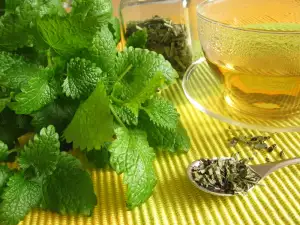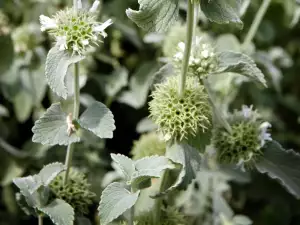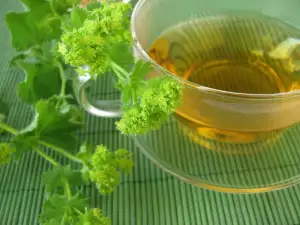Common butterbur / Petasites hybridus / also called Bog rhubarb, Devil's hat and Pestilence wort, is a perennial herb with a fleshy creeping rhizome. Common butterbur develops flower-carrying stems that reach heights of up to 31.5″ (80 cm). The leaves are large, kidney- or heart-shaped, irregularly serrated, the tops are green and smooth, while the bottoms are light gray and fuzzy.
The petioles of common butterbur are hollow. The leaves appear after the flowering of the plant, while the late-blooming leaves are bare and green on both sides. The flowers are reddish, and sometimes even white.
They grow in "cups", gathered in racemose inflorescences, which contain numerous male flowers, tubular female peripheral and a large amount of fruitless hermaphrodite flowers. The fruit is wind-dispersed. Common butterbur blooms in the months of April - May.
Common butterbur grows along the banks of streams and rivers. It is found mainly in southern and central Europe, up to about 3280 ft (1000 meters) above sea level. Common butterbur should not be confused with dock and burdock because even though they look slightly similar, they are very different plants.
Composition of common butterbur
Common butterbur contains saponins, resins, organic acids, pectic substances, choline, inulin. Common butterbur is rich in the sesquiterpene lactones dictyophorines A and B.
Collection and storage of common butterbur
The leaves of common butterbur are harvested when fully developed - in July - August. Dry them in the shade, keeping in mind that the dried leaves should be green in color, odorless and have a slightly bitter taste.

The maximum permissible humidity is around 13%. The roots of common butterbur are picked in the autumn - September to October. They are dried in the shade. Properly dried rhizomes are brown in color, odorless, with a slightly bitter taste. The maximum permissible humidity is around 14%.
From 15.5 lb (7 kg) of collected leaves, you get 2 lb (1 kg) of dried. 9 lb (4 kg) of rhizomes give you 2 lb (1 kg) of dried material. The shelf life of whole and cut leaves is 2 years, and of whole rhizomes - 3 years.
Benefits of common butterbur
Common butterbur is a very popular herb in folk medicine. It is recommended for the treatment of various kinds of coughs and of diseases of the airways such as whooping coughs, bronchitis and bronchial asthma. Common butterbur is an antitussive and also soothes irritated mucous membranes.
The herb has a diuretic, antiasthmatic, anti-inflammatory, soothing and diaphoretic action. Common butterbur is known for its great effects against headaches, while frequent use of the herb can be reduce the severity and duration of migraines to a great extent.
The roots of common butterbur are used to relieve the symptoms of anemia, loss of appetite, stomach heaviness, epilepsy, flatulence. Externally, the leaves may be used for wounds, boils, burns, sprains and dislocations.

It contributes to faster recovery and wound healing. Tea made from common butterbur induces sweating and is recommended for fever and shortness of breath. The antispasmodic action of common butterbur is very well studied. According to experts, it is due to the dictyophorines contained in common butterbura and their derivatives.
Experts recommend that common butterbur be drunk twice a day. Make an infusion of 1 teaspoon of common butterbur and 1 cup (250 ml) of boiling water. Allow to brew for 5 minutes. Drink it throughout the day in small sips.
In folk medicine, common butterbur is applied for the treatment of gastritis and peptic ulcer disease, as well as being used as an anthelmintic, antiasthmatic and diuretic.
Dangers of common butterbur
The herb has a very potent effect, and therefore should be used only under medical supervision or with a prescription. Because of the high toxicity of common butterbur, it should be used in very small quantities to avoid possible negative side effects. Common butterbur is prohibited for consumption by pregnant women.




















Comments